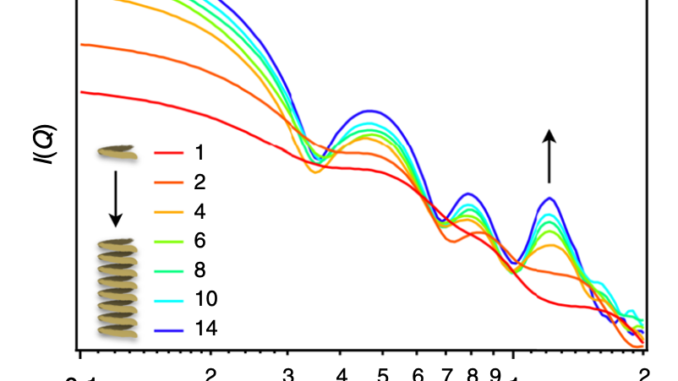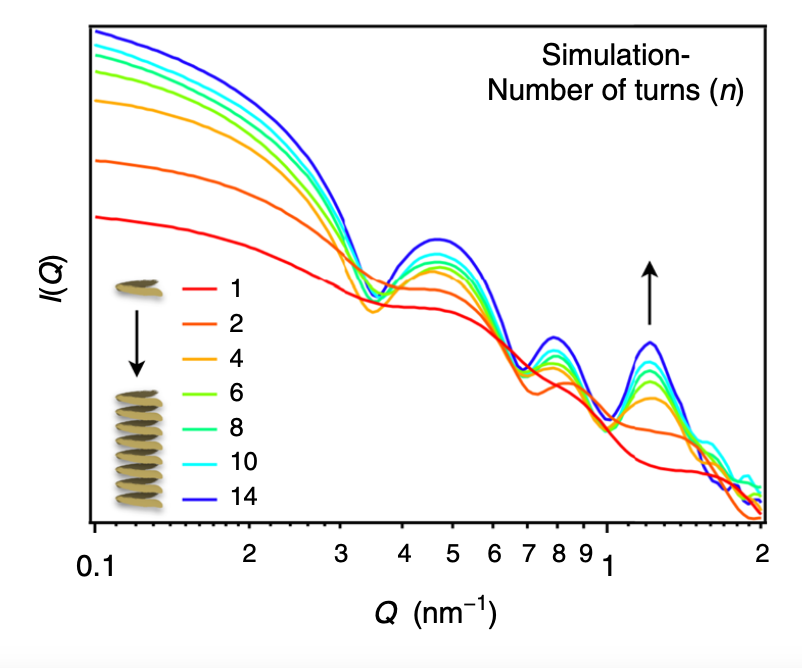
(In 2019, I stopped doing a post on every paper published due to workload and large numbers of papers that ended up with my name on it. However, I think it’s a tradition worth resurrecting, so here’s a series on 2020’s publications…)
Now this is a cool bit of work from 2020. You may remember I was working on a scattering pattern simulator a while back, that would take STL input and convert it to a scattering pattern (through the Debye equation on a random point cloud within the object). Well, here was an application where it turned out to be useful!
There is this group of researchers from Chiba University (with Dr. Keisuke Aratsu and led by Dr. Shiki Yagai) that my colleague Dr. Martin Hollamby (of Keele University, UK) was working with. The Japanese group was mixing molecular suspensions that self-assembles into very interesting structures. They would measure the dried structures using scanning-probe microscopy (SPM), and Martin then helps them (amongst others) to interpret the scattering patterns, thereby demonstrating that the structures also exist before drying in the suspension. When the group made a mixture that seemed to self-assemble into helical structures, they collected some really nice small-angle scattering data with many features. However, there was no easy scattering model for “squashed” helical structures to interpret this data.
So by first programming 3D helices as STL files in OpenSCAD, and running them through my simulation code, we could approximate the scattering behavior. By systematically varying a single helix parameter, we can then find out which scattering features are affected by the variation (and in what way). In this manner, we could *very slowly* match the general features in the scattering pattern.

In the end, we could point at each feature in the scattering pattern and identify what structure in the helix it came from. The “best fit” has the scattering pattern features in the right place, but does not match the general intensity decay. This mismatch arises mainly because we are approximating a structure with complex internal density variation using an overly simplistic two-phase, sharp-interface approximation. Obviously, I need to up my simulation game to be able to deal with densities better in the future.
But the project was very good fun (read: sufficiently challenging at times), and all colleagues have been amazing to work with! I’m amazed that the self-assembled system works this well and very reproducibly, and it seems to have much potential for the future! Check out the paper (and the cool pictures within) here: https://doi.org/10.1038/s41467-020-15422-6

Leave a Reply